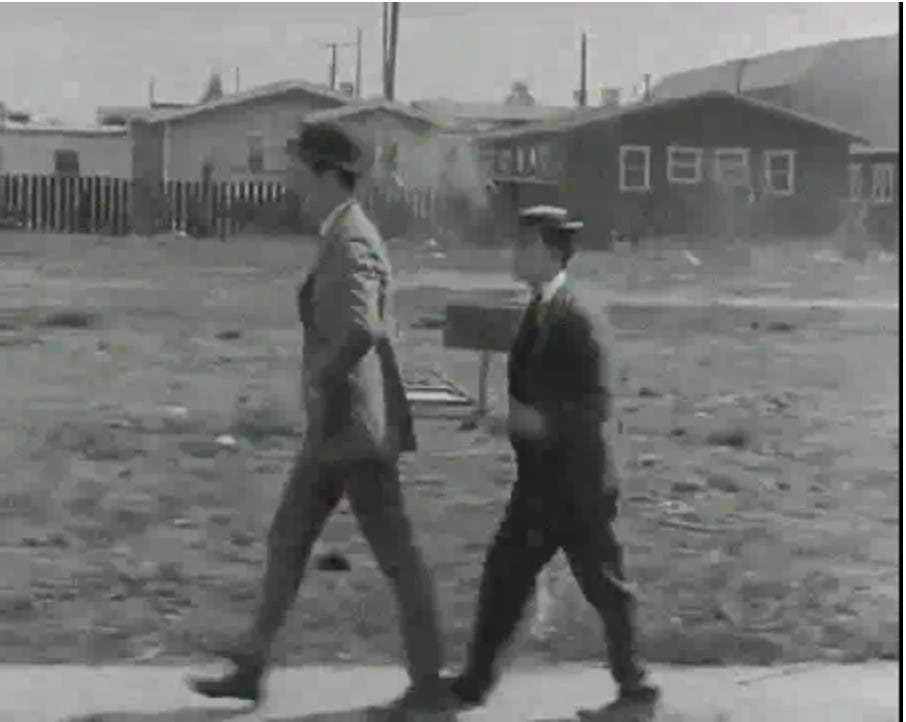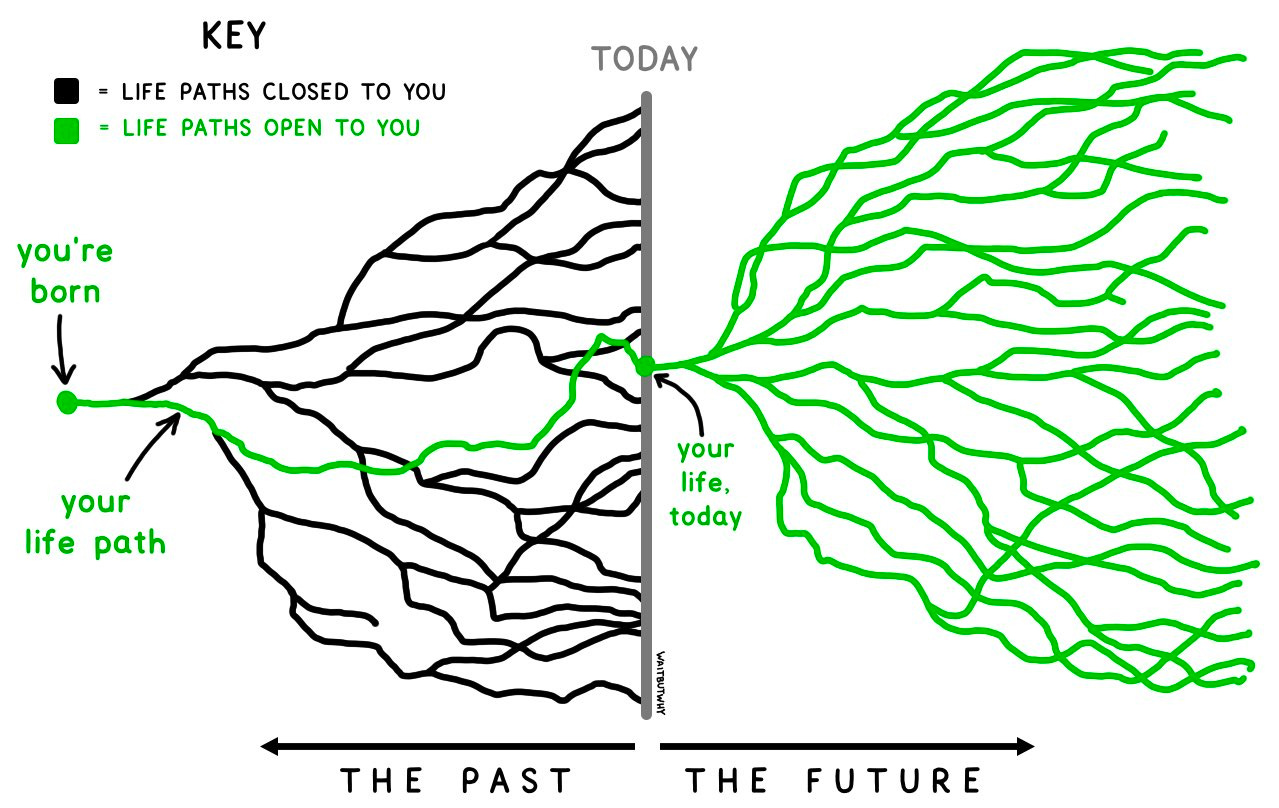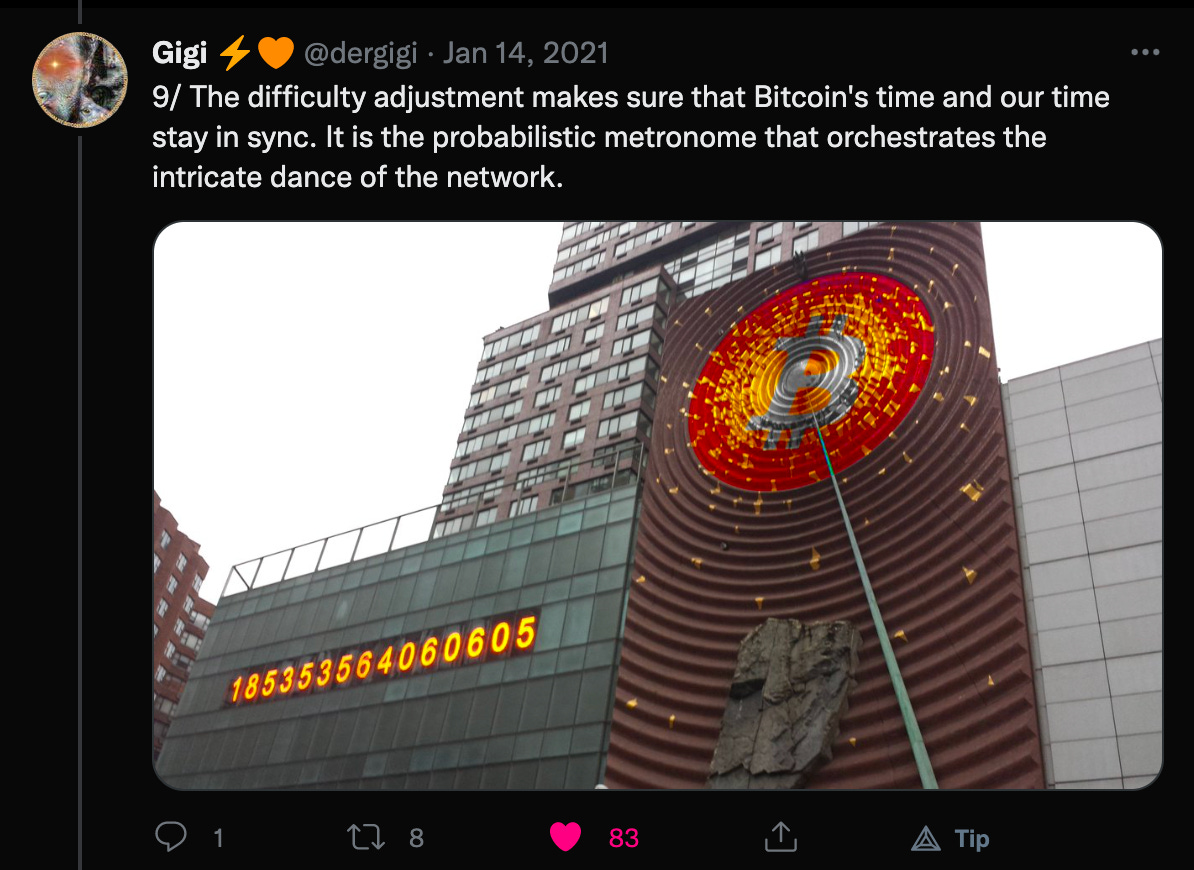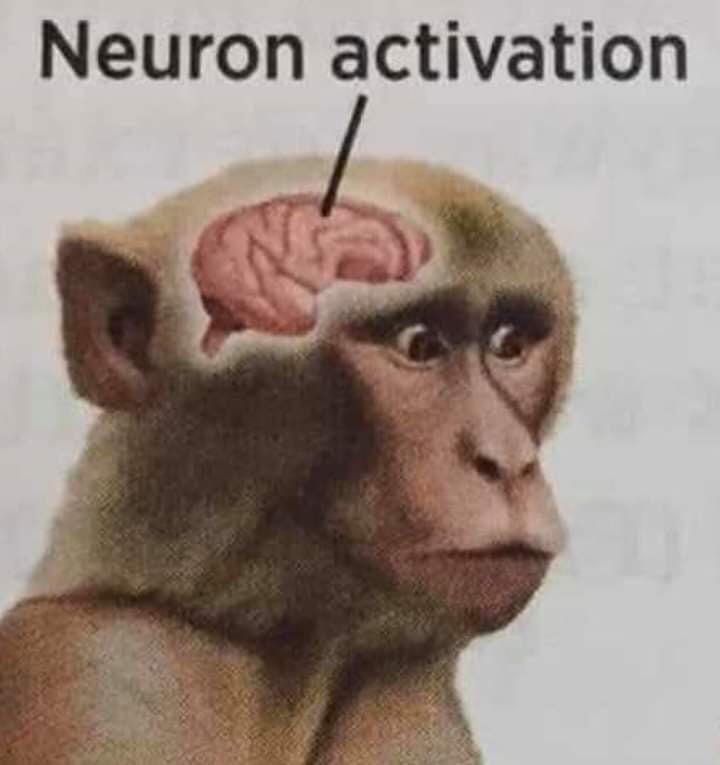Space. Time. Uncertainty.
These three pillars are the fundamental building blocks of our physical Universe.
Without time, there is no movement, and without space, there is nowhere to move through.
Think of the difference between a photograph and a film.
Both have space- but the photograph lacks space moving through time.
A picture is one-dimensional (space), while a movie is two-dimensional (space + time).
What they both lack, however, is uncertainty. A film does not change no matter how many times you watch it. A photograph is stuck in time.
Films and photographs are universes unto themselves, but they lack the full range of dimensionality present in our reality. For this reason, I consider them fractional virtual realities.
In our Universe, we experience not only the dimensions of time and space but also uncertainty.
Our past is known. But our future is uncertain.
Every time we make a decision, a quantum phenomenon is taking place.
We collapse an infinite number of possibilities into a single point, creating a known past and a new future.
Without uncertainty, our Universe would be stale and unmoving. Dynamism and beauty could not exist, and perhaps even consciousness itself would flee.
So why is this important?
We can extrapolate ideas from our reality and place them within fractional virtual realities.
Like catching a quantum butterfly, we can freeze moments in time to study them and learn more about ourselves. We can even use fractional virtual realities to solve complex problems in our reality.
Take math, for example. It’s a language of symbols that we move from our heads to paper, crystallizing them in the process. When other humans agree on the abstract meaning of these symbols, we can assign them to objects in the physical world and use them to predict and build on our reality.
Math is a language of one-dimensional symbols used to describe our multi-dimensional reality.
Creating fractional virtual realities out of abstractions to circumvent the limitations of our reality is an evolutionary staple of humanity. It’s how we transcended Dunbar’s number.
Abstractions allow human beings to coordinate at an impersonal scale; we don’t need to trust anyone if we can trust everyone.
Bitcoin
Bitcoin is a fractional virtual reality. However, it’s different from every other fractional virtual reality in some very special ways.
Bitcoin is made not only of time and space, but also energy.
A photograph is only connected to our reality through an imprint left behind by light. It has no dimension of time, only space. Because it has no time, it cannot have uncertainty and dynamism, and therefore lacks energy.
Bitcoin, on the other hand, is alive. It’s dynamic. Its future is uncertain, its past is immutable and known, and therefore it can connect to our physical reality directly through energy.
But how? How does Bitcoin have its own dimensions of time and space? And what drives its uncertainty principle?
Ledgerspace & Ledgertime
Bitcoin’s arrow of time is created through parameters embedded in its source code.
Specifically, a Proof of Work consensus mechanism and a difficulty adjustment.
If this sounds alien to you, don’t worry. I’ll break it down as simply as I can.
Bitcoin’s history is a simple ledger. Like an excel spreadsheet. We call this ledger the blockchain: a chain of groups (blocks) of transactions that are linked together in time.
The first block was created in 2009. Since then, there have been 760109 blocks, which equates to around 10 minutes per block. In Bitcoin, each block holds a space in which transactions are sent and received.
The average Bitcoin block is 1 megabyte in size. To put that in perspective, the average size of a photograph taken with an iPhone is about 1.5 megabytes.
Time: 10 minutes. Space: 1 megabyte.
Every 10 minutes, a new block is created, and an old block is timestamped, or mined, into the chain. Once a block is mined, it cannot be changed.
Blocks are created by special computers called ASICs. An ASIC’s only job is to create blocks and timestamp them into the chain. They do this by guessing a specific number. When they guess this number, the block is timestamped into the immutable past of Bitcoin’s ledger.
This mechanism is called Proof of Work.
Bitcoin uses this mechanism to create its own arrow of time.
However, Bitcoin time, or Ledgertime, needs to stay in sync with our time. Bitcoin accomplishes this by utilizing a difficulty adjustment.
Difficulty is a variable in Bitcoin’s universe. It changes based on the total computational power of all the ASICs (timestampers) on the network.
To illustrate: I have an activity.
I am thinking of a number between one and 10. Try to guess it.
5? No.
3? No.
8? No.
The number was 6.
Congratulations, you just did proof of work.
Before you guessed correctly, the number in my head was uncertain. It existed as a waveform. But when you finally guessed it, it collapsed into a particle.
It took energy and time for you to guess the number in my head. And I could’ve made it much harder if I wanted by increasing the range of potential answers. In other words, computation in Proof of Work takes time and energy. The larger the number in my head, the more time it would take for you to guess, and vice versa.
Bitcoin creates its own sense of time by programmatically changing difficulty. Aka, increasing or decreasing the amount of energy needed to guess a specific number.
This difficulty adjustment is what keeps blocks coming and going every 10 minutes.
When difficulty goes down, Ledgertime speeds up (it takes less energy to guess a smaller number, so the number is guessed faster).
When difficulty goes up, Ledgertime slows down (it takes more energy to guess a larger number keeping all else constant).
When more ASICs come on to the network, i.e, the total energy of the network increases, Ledgertime speeds up. To combat this, and to keep Ledgertime in sync with our time, difficulty increases to slow Ledgertime back down.
This is how Bitcoin interfaces with our reality.
So, to simplify and summarize:
Timestamping (guessing numbers) requires energy
A difficulty adjustment ensures that Ledgertime stays synchronized
Ledgertime creates a space (Ledgerspace) for transactions to move through
Cool.
But why is this important?
Well, for the first time in the history of humanity, we can move energy non-jurisdictionally through a parallel fractional virtual reality.
Because Bitcoin is fundamentally connected to our physical Universe through the energy required in Proof of Work, we can use it as a portal to transcend our physical meat-space world.
Bitcoins exist in Ledgerspace.
To illustrate this, let’s say I send you 3.96 bitcoin. The transaction is timestamped in block 758802.
Where are the bitcoin?
Well, they exist on the distributed network of hard drives that store Bitcoin’s ledger.
These hard drives (nodes) are scattered across the globe in a decentralized web.
When I sent you those 3.96 bitcoins, they didn’t move from Colorado, USA to wherever you are in the world, they moved from block 758801 to block 758802.
They moved through Ledgerspace.
Bitcoin’s Proof of Work created a portal that allows us to reach into a parallel universe and move energy through Ledgertime & Ledgerspace with no central intermediary.
The effects of this novel fractional virtual reality have yet to fully manifest.
Nobody understands Bitcoin.
But over the next years and decades, we are going to find out what this means for humanity.
Perhaps Bitcoin will be the technology that allows humans to grow from a type-zero civilization into a type-one civilization.
Only time will tell.



















